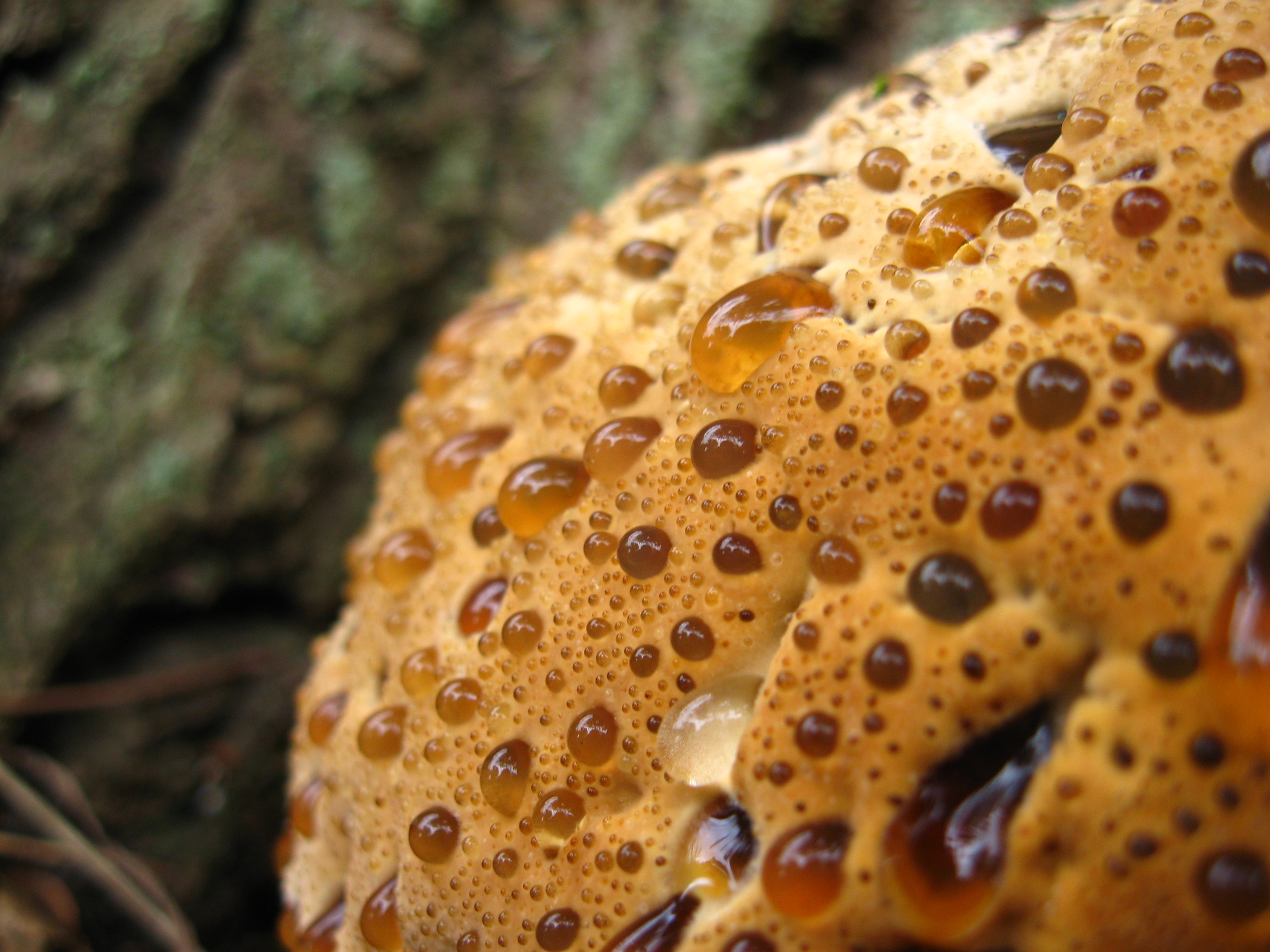Inonotus Dryadeus on:
[Wikipedia]
[Google]
[Amazon]
''Inonotus dryadeus'', (syn. ''Pseudoinonotus dryadaeus''), commonly known as oak bracket, warted oak polypore, weeping polypore or weeping conk, is an inedible species of
 The thick
The thick
fungus
A fungus ( : fungi or funguses) is any member of the group of eukaryotic organisms that includes microorganisms such as yeasts and molds, as well as the more familiar mushrooms. These organisms are classified as a kingdom, separately from th ...
belonging to the genus
Genus ( plural genera ) is a taxonomic rank used in the biological classification of extant taxon, living and fossil organisms as well as Virus classification#ICTV classification, viruses. In the hierarchy of biological classification, genus com ...
''Inonotus'', which consists of bracket fungi with fibrous flesh. Most often found growing at the base of oak trees, it causes white rot and decay of the trunks. It secretes an amber liquid which weeps from tubes in its upper surface.
Description
fruiting body
The sporocarp (also known as fruiting body, fruit body or fruitbody) of fungi is a multicellular structure on which spore-producing structures, such as basidia or asci, are borne. The fruitbody is part of the sexual phase of a fungal life cyc ...
of ''Inonotus dryadeus'' varies in size from 5 cm to 30 cm in width, although specimens up to 75 cm have been found. Its velvety upper surface is cream to rusty brown with a yellower margin, and is pitted with tubes up to 3 cm deep which ooze an orange-brown liquid when the fruit body is young, hence the name "weeping conk".
On the buff underside there are 4–6 fine pores per millimetre. These are initially greyish-white but mature to yellow or ochre.
The flesh is soft and fibrous, yellow-brown in colour and has an unpleasant odour.
Spores
Thespore
In biology, a spore is a unit of sexual or asexual reproduction that may be adapted for dispersal and for survival, often for extended periods of time, in unfavourable conditions. Spores form part of the life cycles of many plants, algae, f ...
s are white, smooth and globose, with dimensions in the range of 6.5–8×7–8 μm.
Similar species
'' I. cuticularis'' grows on beech, sycamore and elm.Habitat and distribution
''Inonotus dryadeus'' is a parasiticsaprobic
Saprotrophic nutrition or lysotrophic nutrition is a process of chemoheterotrophic extracellular digestion involved in the processing of decayed (dead or waste) organic matter. It occurs in saprotrophs, and is most often associated with fungi (f ...
fungus, with spores entering wounds on broadleaf trees (predominantly oak, although sometimes maple, elm and chestnut). The fungus is primarily a root decay fungus, rotting the below−ground parts of roots. Detection is often difficult if the conks have not developed. The fruiting conks appear close to the ground on the trunk, thickly attached, and either singly or in groups.
It has been observed in North America and temperate northern Europe, where it is described as widespread but locally common. Fruiting occurs in summer and autumn, but fruit bodies may overwinter and persist for several years, eventually turning black and cracked. Presence of a fruit body may indicate that the mycelium
Mycelium (plural mycelia) is a root-like structure of a fungus consisting of a mass of branching, thread-like hyphae. Fungal colonies composed of mycelium are found in and on soil and many other substrate (biology), substrates. A typical single ...
has penetrated and weakened the root crown
A root crown, also known as the root collar or root neck, is that part of a root system from which a stem arises. Since roots and stems have quite different vascular
The blood vessels are the components of the circulatory system that transport ...
of the tree.
References
{{Taxonbar, from=Q10708127 Inedible fungi Fungi of North America Fungi of Europe dryadeus Parasitic fungi